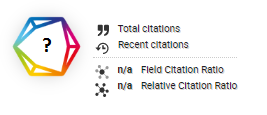PENGARUH PERFORMANCE EXPECTANCY, EFFORT EXPECTANCY, SOCIAL INFLUENCE DAN TRUST TERHADAP NIAT BERKELANJUTAN MENGGUNAKAN FDAS PADA MASA PANDEMI COVID-19
DOI:
https://doi.org/10.46984/sebatik.v25i2.1510Keywords:
Performance Expectancy, Effort Expectancy, Social Influence, Trust, FdasAbstract
Aplikasi pengiriman makanan menjadi teknologi seluler yang sedang berkembang, dan diadopsi secara luas oleh bisnis katering dan pelanggan. Pada masa Covid-19 FDA memberikan manfaat serta menyelamatkan berbagai pihak antara lain, perusahaan di bidang makanan serta pelanggan yang bisa memanfaatkan jejaring online yang ada pada FDA. Artikel ini bertujuan untuk mengidentifikasi implikasi pengaruh 4 faktor yaitu performance expectancy, effort expectancy, social influence dan trust terhadap continuance intention of using FDAs. Sampel dalam penelitian ini berjumlah 120 orang yang pernah menggunakan aplikasi pengiriman makanan setidaknya sekali dengan menggunakan metode convenience sampling. Hasil yang diolah dengan SEM AMOS versi 24 menunjukkan bahwa faktor yang signifikan terhadap continuance intention of using FDAs selama pandemi COVID-19 adalah performance expectancy, effort expectancy, dan social influence. Yang tidak berpengaruh adalah faktor trust.
References
Chong, A. Y. L. (2013) ‘Understanding mobile commerce continuance intentions: An empirical analysis of chinese consumers’, Journal of Computer Information Systems, 53(4), pp. 22–30. doi: 10.1080/08874417.2013.11645647.
Chopdar, P. K. and Sivakumar, V. J. (2019) ‘Understanding continuance usage of mobile shopping applications in India: the role of espoused cultural values and perceived risk’, Behaviour and Information Technology. Taylor & Francis, 38(1), pp. 42–64. doi: 10.1080/0144929X.2018.1513563.
Elvandari, C. D. R., Sukartiko, A. C. and Nugrahini, A. D. (2018) ‘Identification of Technical Requirement for Improving Quality of Local Online Food Delivery Service in Yogyakarta’, Journal of Industrial and Information Technology in Agriculture, 1(2), p. 1. doi: 10.24198/jiita.v1i2.14573.
Fang, I. C. and Fang, S. C. (2016) ‘Factors affecting consumer stickiness to continue using mobile applications’, International Journal of Mobile Communications, 14(5), pp. 431–453. doi: 10.1504/IJMC.2016.078720.
Gao, L., Waechter, K. A. and Bai, X. (2015) ‘Understanding consumers’ continuance intention towards mobile purchase: A theoretical framework and empirical study - A case of China’, Computers in Human Behavior. Elsevier Ltd, 53, pp. 249–262. doi: 10.1016/j.chb.2015.07.014.
Hair, J. F. dkk. (2010) Multivariate Data Analysis. 7th ed. New Jersey: Pearson Prentice Hall.
Hair, J. F. dkk. (2019) ‘When to Use and How to Report The Results of PLS-SEM’, European Business Review, 31(1), pp. 2–24. doi: 10.1108/EBR-11-2018-0203.
Israel, D. J. and Velu, R. (2019) ‘Consumer’s intention to continuous use of mobile food delivery aggregator app’, Journal of Advanced Research in Dynamical and Control Systems, 11(7), pp. 119–128.
Kang, S. (2014) ‘Factors influencing intention of mobile application use’, International Journal of Mobile Communications, 12(4), pp. 360–379. doi: 10.1504/IJMC.2014.063653.
Lai, I. K. W. and Shi, G. (2015) ‘The impact of privacy concerns on the intention for continued use of an integrated mobile instant messaging and social network platform’, International Journal of Mobile Communications, 13(6), pp. 641–669. doi: 10.1504/IJMC.2015.072086.
Liu, S. and Wang, J. (2016) The Internet Society in China, The Internet Society in China. Beijing China: China Renmin University Press. doi: 10.1007/978-981-13-8237-6.
Marinković, V., Đorđević, A. and Kalinić, Z. (2020) ‘The moderating effects of gender on customer satisfaction and continuance intention in mobile commerce: a UTAUT-based perspective’, Technology Analysis and Strategic Management. Taylor & Francis, 32(3), pp. 306–318. doi: 10.1080/09537325.2019.1655537.
Mun, Y. P., Khalid, H. and Nadarajah, D. (2017) ‘Millennials’ Perception on Mobile Payment Services in Malaysia’, Procedia Computer Science. Elsevier B.V., 124, pp. 397–404. doi: 10.1016/j.procs.2017.12.170.
Ray, A. dkk. (2019) ‘Why do people use food delivery apps (FDA)? A uses and gratification theory perspective’, Journal of Retailing and Consumer Services. Elsevier Ltd, 51(March), pp. 221–230. doi: 10.1016/j.jretconser.2019.05.025.
Roh, M. and Park, K. (2019) ‘Adoption of O2O food delivery services in South Korea: The moderating role of moral obligation in meal preparation’, International Journal of Information Management. Elsevier, 47(September 2017), pp. 262–273. doi: 10.1016/j.ijinfomgt.2018.09.017.
Sarstedt, M., Ringle, C. M. and Hair, J. F. (2017) Partial Least Squares Structural Equation Modeling, Handbook of Market Research. doi: 10.1007/978-3-319-05542-8.
Shao, Z. dkk. (2019) ‘Antecedents of trust and continuance intention in mobile payment platforms: The moderating effect of gender’, Electronic Commerce Research and Applications. Elsevier B.V., 33, p. 100823. doi: 10.1016/j.elerap.2018.100823.
Smith, W. and Freedman (2020) ‘Isolation, quarantine, social distancing and community containment: pivotal role for old- style public health measures in the novel coronavirus (2019-nCoV) outbreak’, Journal of travel medicine, 27(2), p. taaa020.
Susanto, A. dkk. (2013) ‘User acceptance of Internet banking in Indonesia: Initial trust formation’, Information Development, 29(4), pp. 309–322. doi: 10.1177/0266666912467449.
Venkatesh, V. dkk. (2011) ‘Extending the two-stage information systems continuance model: Incorporating UTAUT predictors and the role of context’, Information Systems Journal, 21(6), pp. 527–555. doi: 10.1111/j.1365-2575.2011.00373.x.
Wu, P. C. S., Yeh, G. Y. Y. and Hsiao, C. R. (2011) ‘The effect of store image and service quality on brand image and purchase intention for private label brands’, Australasian Marketing Journal. Australian and New Zealand Marketing Academy., 19(1), pp. 30–39. doi: 10.1016/j.ausmj.2010.11.001.
Yeo, V. C. S., Goh, S. K. and Rezaei, S. (2017) ‘Consumer experiences, attitude and behavioral intention toward online food delivery (OFD) services’, Journal of Retailing and Consumer Services. Elsevier, 35(December 2016), pp. 150–162. doi: 10.1016/j.jretconser.2016.12.013.
Yuan, S. dkk. (2016) ‘An investigation of users’ continuance intention towards mobile banking in China’, Information Development, 32(1), pp. 20–34. doi: 10.1177/0266666914522140.
Zhao, Y. and Bacao, F. (2020) ‘What factors determining customer continuingly using food delivery apps during 2019 novel coronavirus pandemic period?’, International Journal of Hospitality Management. Elsevier Ltd, 91(March), p. 102683. doi: 10.1016/j.ijhm.2020.102683.
Zhou, T. (2011) ‘Examining the critical success factors of mobile website adoption’, Online Information Review, 35(4), pp. 636–652. doi: 10.1108/14684521111161972.
Zhou, T. and Li, H. (2014) ‘Understanding mobile SNS continuance usage in China from the perspectives of social influence and privacy concern’, Computers in Human Behavior. Elsevier Ltd, 37, pp. 283–289. doi: 10.1016/j.chb.2014.05.008.
Downloads
Published
How to Cite
Issue
Section
License
Authors retain all their rights to the published works, such as (but not limited to) the following rights; Copyright and other proprietary rights relating to the article, such as patent rights, The right to use the substance of the article in own future works, including lectures and books, The right to reproduce the article for own purposes, The right to self-archive the article








